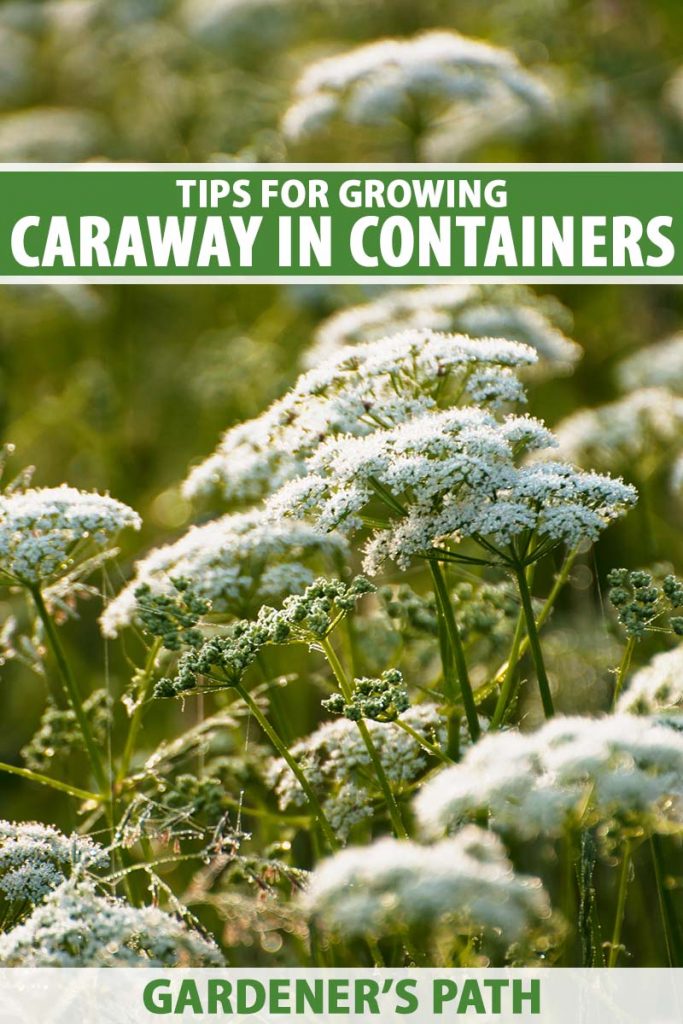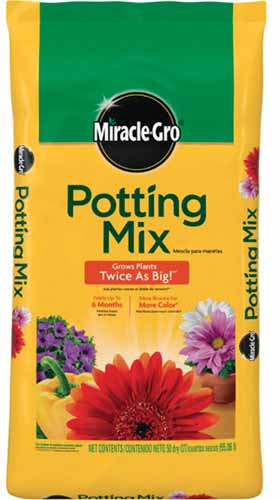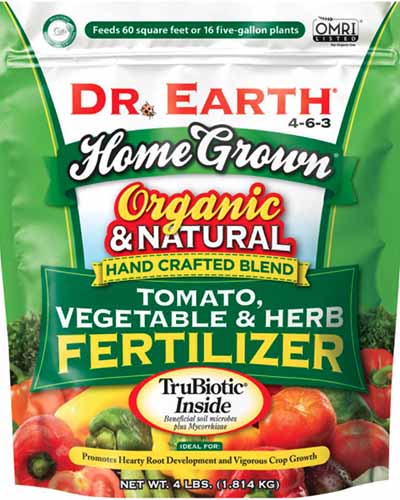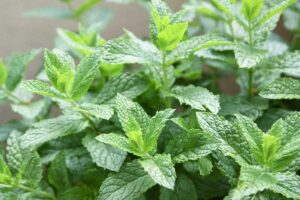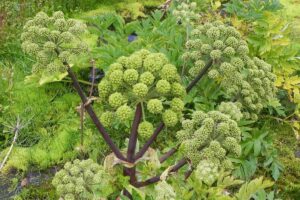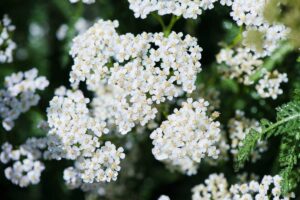Don’t have the luxury of a massive garden? Need to get your caraway fix? I feel you. The solution, of course, is to plant your caraway in a container.
Some people are surprised to learn that Carum carvi can grow perfectly well in a pot, so long as you give its long roots room to stretch out, and provide enough sun to produce those tasty seeds.
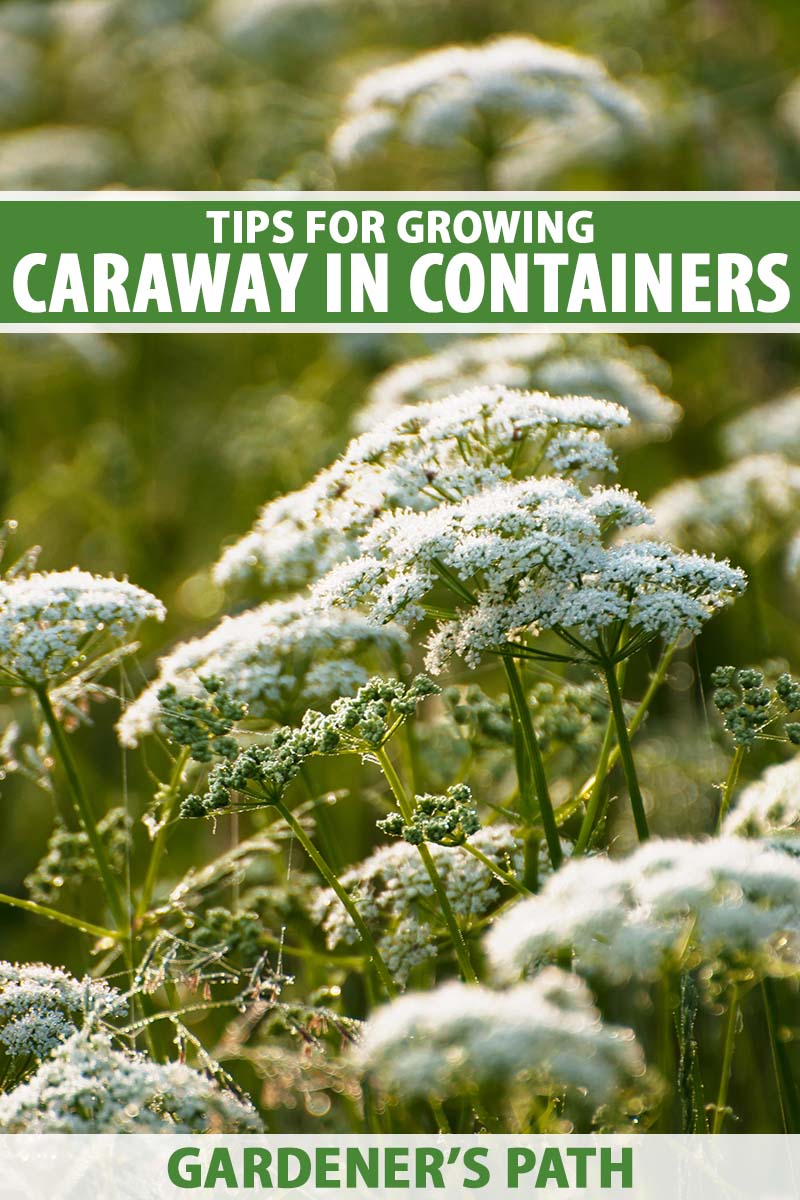
We link to vendors to help you find relevant products. If you buy from one of our links, we may earn a commission.
If you’ve never grown it before (what are you waiting for!?), you might want to check out our guide to growing caraway first. Then come back here.
In this guide, we’ll focus on container growing specifically.
Here’s what’s to come:
What You’ll Learn
Choosing a Container
Caraway has a long (and edible) taproot. Remember, this herb is a part of the Apiaceae or Umbelliferae family, which includes such deep-rooted veggies as carrots, parsnips, and celeriac.
For that reason, you need to choose a deep container.
Pick something that is a foot deep at a minimum; two feet deep is even better.
Plants need to be spaced about nine to 12 inches apart, so a pot that is 12 inches wide at the top and two feet deep would provide ample room for one plant.
You could squeeze two of them in the same container, and caraway grows fine even if it’s a little crowded. But you’re less likely to encounter diseases if you give your plants more space.

The material of the pot doesn’t matter. Cement, plastic, terra cotta, stone, or wood are all fine.
The important element here is that the pot has one or more drainage holes. This herb can’t stand water-saturated roots, so good drainage is essential.
Planting
Fill your pot to about a half inch from the top with potting soil made for containers.
You don’t want to use soil from your garden or soil made for garden beds. Miracle-Gro Potting Mix is a popular choice.
Home Depot carries 50-quart bags of this mix if you’re looking to purchase some for your container herbs.
Place seeds at least nine inches apart in the soil and lightly cover with a quarter inch of soil.
Or, you can go the less precise route like I do. I usually sprinkle a few seeds in each pot, and then thin out the weaker seedlings once they’ve emerged so that plants are ultimately about 12 inches apart.
I’ll grow three plants in an 18-inch container, but if you’re using a smaller container, aim to have a few seeds in the center of each pot and plan on thinning them out.
I like the latter method because you can eat the seedlings, so it isn’t a total waste if you pull the extras up or snip them. Plus, you get to pick the biggest, strongest seedlings to leave behind.
While the seeds are germinating, keep the soil evenly moist.
P.S. If you’re curious about how and when to harvest caraway seeds, we have a guide for that.
These herbs produce seeds during their second year, so you can enjoy the leaves in the first year, and then harvest seeds in the second.
Container Care
Once plants have become established and are about six inches tall, you can let the top inch of soil dry out in between waterings.
Young caraway plants need regular water, but more established plants can tolerate a little bit of dryness.
Keep in mind that the soil in containers dries out more quickly than the soil in the ground, so you need to keep a close eye on things.
C. carvi likes rich, fertile soil. Plants in pots generally need more fertilizing than those in the garden, so it is important to stay on top of your feeding.
I like to use an herb-specific fertilizer, like this one made by Dr. Earth, available from Home Depot.
Apply once every eight weeks, following the manufacturer’s recommendations.
If you have a little container herb garden happening, be careful not to grow dill or fennel nearby, because these plants can cross-pollinate with one another and you may end up with seeds that don’t taste as you expected.
Troubleshooting Tips
While caraway is generally free of pests and diseases, you may occasionally see problems.
This herb is prone to damping off, so be sure to use a clean container and fresh soil when planting seeds. If your seedlings fail to emerge, or if seedlings emerge but they are weak and particularly thin at the base of the stem, they likely have this disease.
It’s caused by fungi from the Rhizoctonia and Fusarium genera as well as Pythium water molds. Regardless of which pathogen is causing the issue, there is no cure.
It’s best to dump the soil, clean out the pot and any tools you used with a 1:10 mix of bleach and water, and start again.
Powdery mildew might also be a problem, particularly with crowded plants. Our guide will walk you through identifying and dealing with this disease.
If your plant looks stressed, be sure to check the moisture level in the soil. If all is well, you may have placed your plant too close to a brick wall or other structure that is increasing the heat that the plant receives.
For instance, if the air temperature reads 75°F, but the container is near a south-facing wall and the heat is being absorbed and released by the wall, it could be much warmer for your plants.
You’re Ready to Cultivate Your Container Caraway
Caraway is one of those plants that is just as happy in a container as it is in the ground – provided that you give it the conditions it prefers. No shallow pots for this delectable herb.
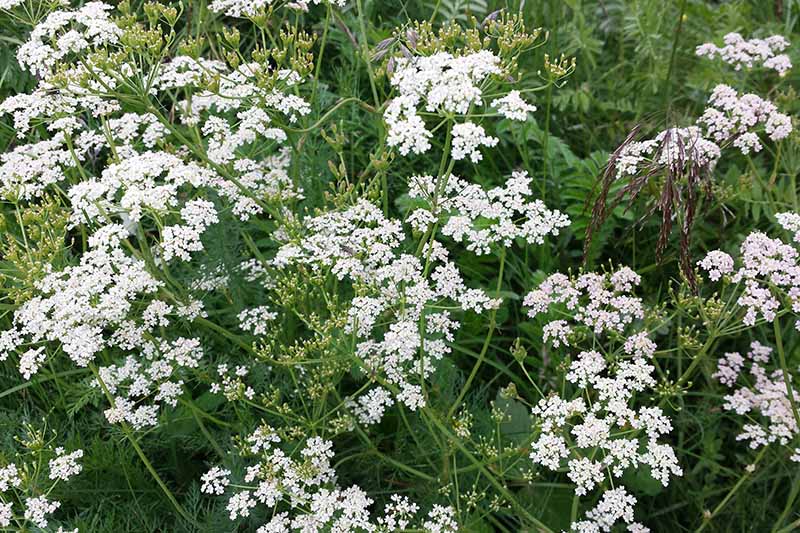
I love nothing more than to hear about the container-growing adventures of other gardeners.
If you’re having success with your potted caraway, please come back and share your tips in the comments section below!
And for more information about caraway, you will want to check out these guides next:
